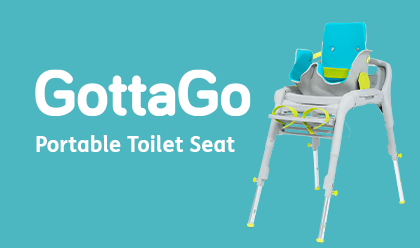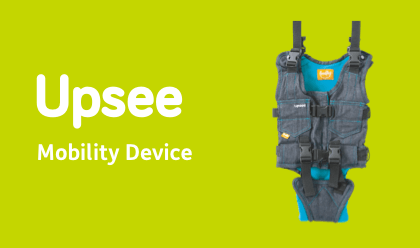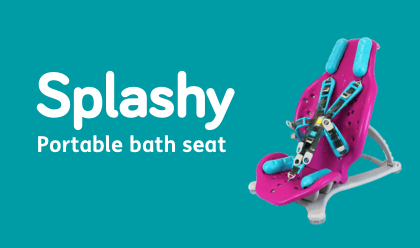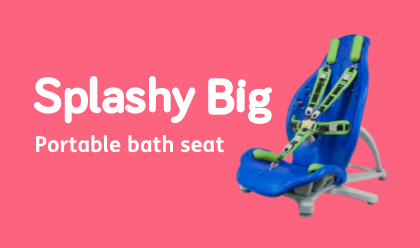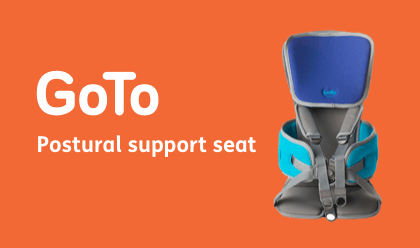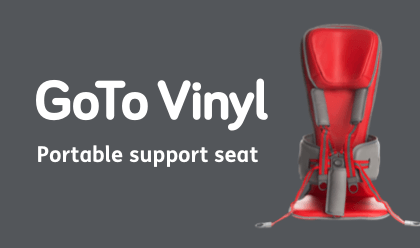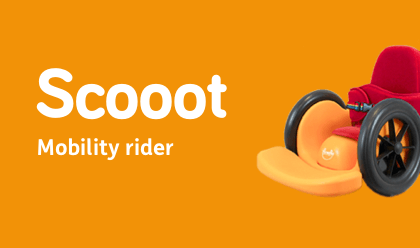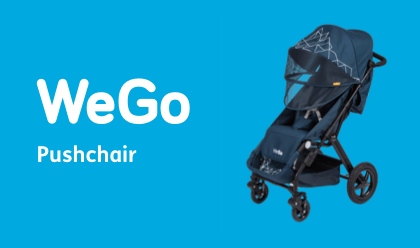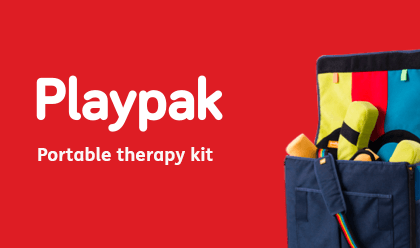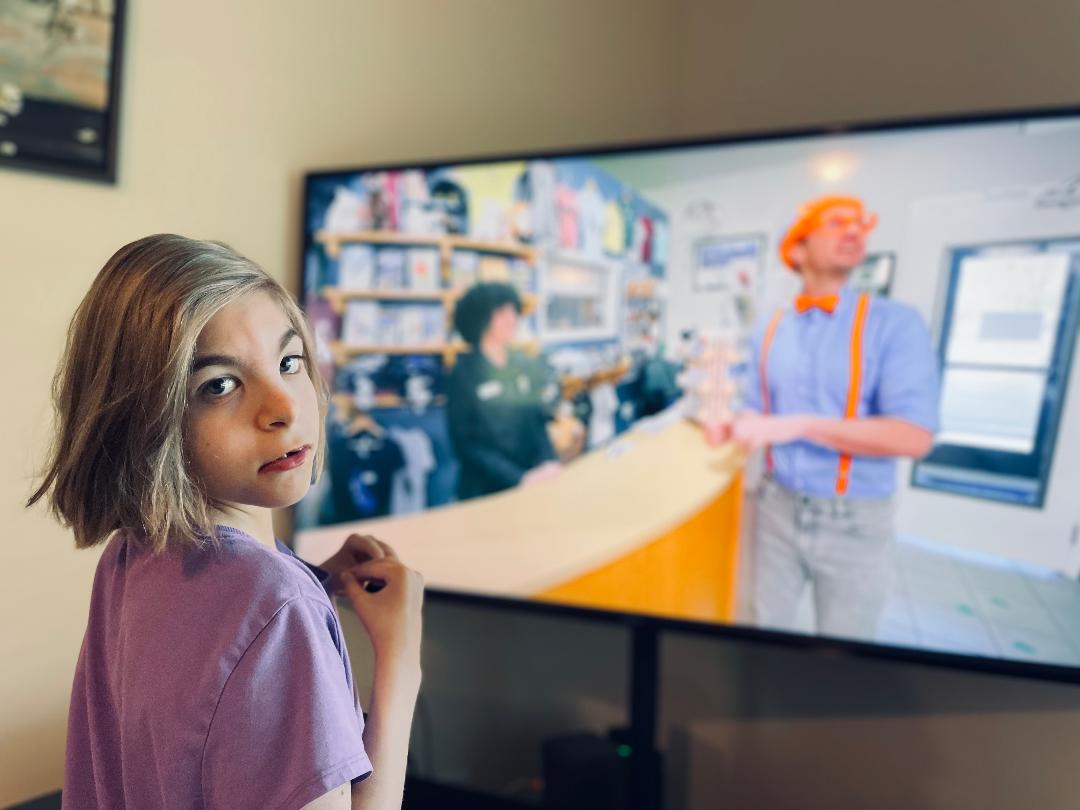A Quick and Easy Home Exercise for a Child with Cerebral Palsy

It’s hard work looking after kids and setting aside time for exercise and activities can seem like a huge challenge.
As a children’s physiotherapist I always thought that the exercises and activities that I recommend could be fitted into a child’s routine easily.
Having my own children has been a total-eye opener for me.
It made me realise it’s absolutely essential that therapy should fit into a family’s everyday life, be fun and feel like time well spent.
It takes patience, commitment and precision planning to fit in the usual everyday essentials like washing, cleaning, feeding and generally trying to maintain a calm, happy household never mind finding extra time for stretches and exercises!
Believe me, I understand that it can feel like mission impossible.
What your child does at home and school is the most important factor in when and how they will (or won't) achieve their goals.
One hour of therapy a week on its own is just not enough to make the difference.
Goals should be something that your child, you (parent or caregiver) and your child’s therapist, along with anybody else involved, should have agreed during the first time you met together to find out what would help them.
The more exciting and rewarding it will be for your child when the goal is achieved, the better.
This will help to keep everyone signed up and motivated especially to do the activities even when you don’t feel like it, because, let’s face it, as adults it can be difficult to follow a regular exercise program although we probably know we should: gym memberships anyone?!
So what can I suggest that might help you make extra time for exercise and activities without it making you feel overwhelmed?
One exercise that is really simple and easy to fit into everyday life, no matter the age of the child, is time spent lying on their tummy.
Now, I know that tummy time is generally known as something for babies but the good news is that it’s a really helpful position for children with any physical difficulties including cerebral palsy.
Here’s why tummy down time should be encouraged in all children:
1) Lying on the tummy provides a stretch to the front of the body
This is because children who have difficulty walking or who spend any amount of time in a wheelchair are more likely to get tight hips, knees and tummy muscles.
They are also more likely to develop a rounded back (kyphosis and/or scoliosis) and often their shoulders are forward and rounded.
Being in a tummy-down position provides a stretch to the front of the hips, gravity helps to straighten the knees and the back gets a lovely stretch away from being in a seated position.
Lying with arms up to the sides gives the shoulders a good stretch and keeping the face turned to one side helps to give the neck a stretch.
If your child is able to prop up on his or her elbows, their back will get even more of a stretch but please don’t worry if they can’t manage it.
Important Tip: try to make sure your child is as straight as possible and not twisting one way. Use cushions for support if needed.
2) Time on the tummy helps to develop head control and sitting balance
When your child lifts their head up to look around when they are lying on their tummy, the muscles in the neck, shoulders, back, bottom and legs are all being activated to get stronger.
These are the muscles that help to keep us up against gravity and are used during head turning, rolling, sitting, crawling, standing and walking and when moving or transitioning between positions.
Being on the tummy helps children to learn to shift weight from one side of the body to the other, right side to left side, forwards and back which is an essential part of developing balance skills.
3) Tummy-down time helps with sensory development in so many ways: Touch and body awareness
Being on their tummy provides your child with a different sensory experience.
The pressure of the floor on the front of the body helps to develop body awareness while the different textures of the floor and blankets on the hands, face and other body parts provides important touch (tactile) input.
Vision
When your child is on their tummy, they have to shift between looking directly down in front to something across the room.
This helps to develop near and far vision and strengthens the eye muscles which makes it easier to scan, focus and use both eyes together.
Speech and language
When your child lifts their head and looks around, they are stretching and developing muscles in the neck, jaw and mouth which are important for speech and language and other oral skills.
How to make tummy-down time work for your child:
- Make it part of the daily routine
- If you know that there is a possibility that your child may have any physical difficulties, start incorporating the tummy-down position for play as early as possible. This way, it becomes the ‘norm’ and a comfortable place for your child to be.
- Have a tummy time ‘tool box’.
- It can be uncomfortable for children to lie down on a flat surface right away. Make use of wedges, cushions or rolled up towels to prop your child up under the chest so they are at a bit of an angle. This makes it easier to lift up the head to look around and engage with something in front of them.
- Use toys that are appropriate for your child and have them easily available to offer distraction e.g. cause & effect, light toys, noisy toys, toys that feel great, books, puzzles, building blocks etc.
- iPads (and other tablets), phones and other technologies are awesome for keeping older kids in the tummy down position. Make it a rule that they can only play with them if they do 20 minutes on their tummies first!
The best tool to use is yourself
The more you get involved in your child’s therapy and activities, the happier, calmer and more confident they will be.
Remember to start gradually.
Build up the time
For children of all ages, if they are uncomfortable and not used to being tummy down, do little and often to begin with.
Example: 3+ minutes at a time and aim to do this five or more times per day.
For babies: ideally you want them to be getting up to 90 minutes tummy time very day by the age of 4 months.For older children: 20 – 60 minutes a day, every day, is ideal. Longer is fine too!
Important Tip: Check with your doctor or therapist that it is ok for your child to be in the tummy down position before starting if this is a new position for your child.
Children with reflux, PEGs or certain medical conditions may need some creative solutions to be able to benefit from this important tummy time down position.
If you would like help or advice on how to incorporate the tummy down position in your child’s daily routine then please do ask your therapist who will be able to give you specific ideas to suit your unique little person.
I hope this has been helpful.
To finish off, I just want to say that as therapists, we really want to support you and your child to achieve your goals, whatever they may be.
Therapy, like parenting, is a matter of trial and error.
Some things work well, some things not so much.
If home programs or therapy advice doesn’t suit your child’s lifestyle right now, let us know so we can support you to make a plan that does work.
Have fun learning and growing with your amazing child and thanks for reading!
